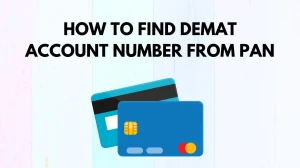
What is Overdraft Protection? How Does Overdraft Protection Work?
Overdraft protection is a banking service that prevents declined transactions and bounced checks by automatically transferring funds from a linked account to cover insufficient funds in a checking account.
by Kowsalya
Updated Dec 16, 2023
On This Page
What is Overdraft Protection?
Overdraft protection is a financial service designed to prevent the rejection of transactions, such as checks, ATM withdrawals, and debit card charges when a bank account lacks sufficient funds. This optional service acts as a safeguard by allowing the bank to cover the shortfall using a designated backup account, which can be a linked savings account, credit card, or line of credit.
While providing a safety net, overdraft protection comes with associated fees, including overdraft fees and transfer fees, depending on the type of linked account. The service helps avoid bounced checks and declined transactions, but users should be mindful of the costs involved and choose their backup accounts wisely.
How Does Overdraft Protection Work?
Overdraft protection functions as a financial safety net by preventing the rejection of transactions when a bank account lacks sufficient funds. When a customer enrolls in overdraft protection, they designate a backup account, such as a linked savings account, credit card, or line of credit. If the account balance falls below zero, the bank covers the shortfall, ensuring that transactions go through.
However, this service comes with associated fees, including overdraft and transfer fees. In essence, overdraft protection acts as an automatic, pre-approved loan or transfer, sparing account holders from bounced checks and declined transactions but requiring careful consideration of the associated costs.
Embark on a journey through the expansive universe of Finance by delving into the diverse and informative content offered at MarketsHost.
How to Avoid Overdraft Fees?
Avoiding overdraft fees requires careful financial management and awareness of your account balance. Here are some strategies to help you steer clear of overdraft fees:
Regularly Monitor Your Account Balance
Keep a close eye on your account balance through online banking or mobile apps. Knowing your available funds helps you make informed financial decisions and prevents accidental overdrawing.
Set Up Account Alerts
Many banks offer account alert services. Set up alerts to notify you when your balance falls below a certain threshold. This way, you can take prompt action to avoid overdrafts.
Opt Out of Overdraft Protection
While overdraft protection can be beneficial, you have the option to opt-out if you prefer not to incur associated fees. Without overdraft protection, transactions exceeding your balance will be declined, saving you from overdraft fees.
Maintain a Buffer in Your Account
Keep a buffer amount in your account to act as a safety net. This buffer can help cover unexpected expenses or miscalculations, reducing the risk of overdrawing.
Use Banking Apps and Tools
Take advantage of budgeting and spending tracking features provided by banking apps. These tools can give you insights into your spending patterns and help you plan accordingly.
Link to a Savings Account
Consider linking your checking account to a savings account. In the event of a potential overdraft, funds can be automatically transferred from your savings to cover the shortfall. Some banks offer this service with minimal or no transfer fees.
Opt for No-Overdraft-Fee Checking Accounts
Explore checking account options that do not charge overdraft fees. Some financial institutions, like Discover Cashback Debit Account, automatically decline transactions that exceed your balance without charging overdraft fees.
Be Mindful of Automatic Payments
If you have automatic bill payments set up, ensure that your account has sufficient funds to cover these transactions. Late fees from merchants can add up, in addition to potential overdraft fees.
Understand Your Bank's Policies
Familiarize yourself with your bank's overdraft policies, including fee amounts and daily limits. Knowing the terms and conditions will help you make informed decisions about your spending.
Consider Low-Fee or No-Fee Checking Accounts
Some banks offer checking accounts with lower fees or no fees at all. Switching to an account with favorable fee structures can contribute to reducing your overall banking costs.
What Are the Types of Overdraft Protection?
Overdraft protection is a financial service offered by banks to help account holders avoid the inconvenience and costs associated with overdrawing their checking accounts. There are several types of overdraft protection, each with its own features and costs. Here's a breakdown of the common types:
Linked Deposit Account
How It Works
In this type of overdraft protection, you link another deposit account, such as a savings or secondary checking account, to your primary checking account.
Operation
When your checking account balance is insufficient to cover a transaction, funds are automatically transferred from the linked deposit account to cover the shortfall.
Costs
Some banks may charge a per-transfer fee for this service. The fee is typically lower than the overdraft fee charged for negative balances.
Overdraft Line of Credit
How It Works
This type involves linking your checking account to a pre-approved line of credit. When your account balance goes negative, funds are borrowed from the line of credit to cover the deficit.
Operation
You may incur a transfer fee, and you'll be required to repay the borrowed amount along with any accrued interest.
Costs
Transfer fees and interest charges apply. Interest rates vary, so it's essential to understand the terms before using this option.
Linked Credit Card
How It Works
Similar to an overdraft line of credit, this option links your checking account to a credit card. When an overdraft occurs, funds are automatically advanced from the credit card to cover the deficit.
Operation
You may face a fee for the cash advance, and interest will accrue on the borrowed amount until repaid.
Costs
Fees for cash advances and interest charges on the outstanding balance apply. Rates vary by institution.
What Are the Pros and Cons of Overdraft Protection?
Pros of Overdraft Protection
- Ensures your payments go through, even if your account is short on funds.
- Keeps your low account balance private from payment recipients.
- Helps dodge overdraft fees and penalties by covering transactions.
- Annual protection costs may be lower than a single overdraft fee.
- Provides backup for critical transactions in emergencies.
- Linking checking to savings offers a straightforward safeguard.
Cons of Overdraft Protection
- May have a fee, even if you never use the service.
- Some banks charge fees for using overdraft protection or multiple transactions.
- Still might fail if linked accounts lack funds.
- Having protection may encourage overspending.
- Misuse could strain your relationship with the bank.
- Involves extra bank transactions, impacting financial privacy.
What is Overdraft Protection-FAQs
1. What is Overdraft Protection?
Overdraft protection is a banking service that helps prevent transactions from being declined or checks from bouncing when there are insufficient funds in a checking account.
2. How does Overdraft Protection work?
When a transaction exceeds the available funds in a checking account, overdraft protection comes into play.
3. What are the benefits of Overdraft Protection?
Overdraft protection offers several benefits, such as avoiding declined transactions and preventing the imposition of overdraft fees.
4. Are there any costs associated with Overdraft Protection?
While Overdraft Protection can help avoid overdraft fees, it may come with its costs.
5. Can I opt out of Overdraft Protection?
Yes, account holders typically have the option to opt out of overdraft protection if they prefer not to use the service.




